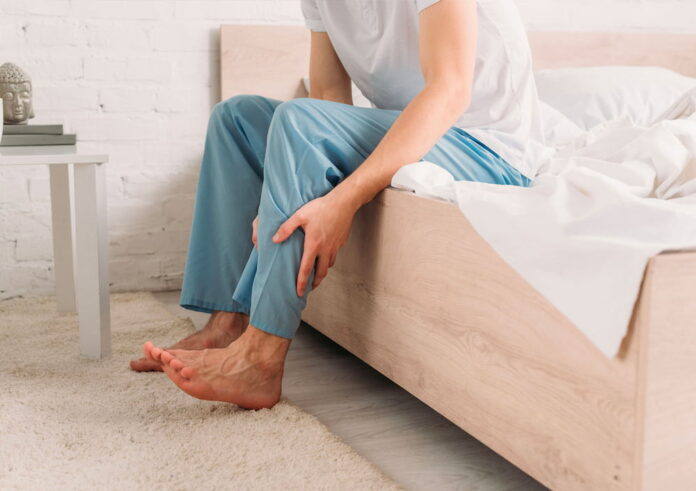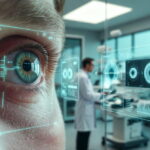Varicose veins are caused by circulatory system dysfunction. Although varicose veins can appear everywhere on the body, they are most commonly found in the legs. Varicose veins are linked to several leg disorders. What are these syndromes, and how do they affect varicose veins? In this post, we will solve these doubts, and you will learn more about varicose veins.
Varicose veins, a problem beyond aesthetics
Varicose veins are mostly considered only an aesthetic problem because of the appearance they cause on the skin. When they affect the legs, these veins are visible to the naked eye because they protrude from the skin due to dilatation.
Varicose veins are distinguished by their shape: bulging, twisted, blue, and reddish. This appearance results from an accumulation of blood and a widening of the veins. In some cases, improper blood flow may lead to the formation of life-threatening blood clots.
Symptoms of varicose veins
Depending on the severity of the condition, people with varicose veins in the legs may experience the following:
– Night cramps
– Pain
– Swelling, itching, and heaviness in the legs
– Irritation and changes in skin coloring
– Ulcers
Symptoms may worsen after prolonged standing or sitting. Sometimes varicose veins can limit a person’s activities.
People more likely to have varicose veins
Some factors increase the likelihood of varicose veins. Some of these factors are:
– Older age
– Family history of circulatory problems
– Sedentary lifestyle
– Obesity
– Being a woman
Syndromes of the legs and their relation to varicose veins
Some syndromes have been related to the presence of varicose veins; however, this association is still unclear. Among these syndromes are:
1) Restless legs syndrome
People suffering from this syndrome have an uncontrolled impulse to move their legs due to severe discomfort. The feeling is briefly relieved by movement. It is more prevalent in the evening or at night, and many have involuntary leg movements while sleeping.
The origin of this condition is unknown at this time, although it can induce sleep disruptions and daytime tiredness. Varicose veins and venous insufficiency are prevalent in persons with restless legs syndrome, but their association is uncertain.
2) Periodic limb movement disorder (PLMD)
PLMD is a condition in the legs that causes them to move uncontrollably while the person sleeps. The contractions in the legs occur every 20 to 40 seconds during sleep and can last from less than 1 second to 10 seconds. These nocturnal movements do not awaken the sufferer but can be perceived by the bed partner.
However, this disorder can disrupt sleep because it may occur just as the person falls asleep. The causes of this disorder are unknown, but it is common for people with narcolepsy to have it.
Doctors who treat this disorder evaluate whether the person has a vascular disease or varicose veins. These conditions can also cause involuntary movements and discomfort in the legs during sleep.
3) Economy class syndrome
This syndrome refers to the appearance of blood clots due to poor mobility. It is named after various factors related to a flight (such as immobilization, low humidity, and hypobaric hypoxia) and the person’s condition (obesity, use of contraceptives).
People who are older, obese, have cancer, or have recent surgeries are more likely to suffer venous thromboembolism during air travel. Also, people with varicose veins have a moderate risk of clot creation.
Conclusion
Varicose veins are a common problem among the female population. While it is not yet known how the leg syndromes related to varicose veins, physicians have observed that some patients with varicose veins have some of the previously mentioned syndromes. See a vein doctor if you have varicose veins; they can help you find the best treatment.
Read Also
- Ketamine-Assisted Therapies: Impacts on Employee WellbeingWorkplace stress is common today. Many employees feel tired, anxious, or burned out. Regular therapy can help, but some people need more support. Ketamine-assisted therapy is showing good results for mental health. A ketamine-assisted therapist guides each session safely. This therapy can improve mood, focus, and energy. Learning more about it can help teams stay… Read more: Ketamine-Assisted Therapies: Impacts on Employee Wellbeing
- The Future of Men’s Health: Why Telehealth Is Here to StayTelehealth isn’t just a pandemic trend that faded into the background. For Australian men, it has become one of the most practical, time-saving, and stress-free ways to manage everyday health — and it’s shaping the future of how we access care. Platforms like DOCTO, an Australian online doctor and specialist telehealth service, are leading the… Read more: The Future of Men’s Health: Why Telehealth Is Here to Stay
- How to Build a Simple, Clean Skincare Routine ?You don’t need a complicated skincare routine. It doesn’t have to be something that requires twenty different products and confusing steps. Your routine works well with just a few high-quality clean ingredients. The beauty industry keeps pushing more products, but your skin actually needs less. You only need a simple approach to get better results… Read more: How to Build a Simple, Clean Skincare Routine ?
- How Preventive Dental Care Supports Overall HealthHave you ever wondered how a simple dental checkup could impact your entire body? Oral health is more than just a bright smile. Studies show that poor dental habits can contribute to serious health problems. Gum disease and tooth decay are linked to heart disease, diabetes, and infections. Yet, many people overlook preventive dental care.… Read more: How Preventive Dental Care Supports Overall Health
- Seeing Clearly in a High-Tech World: A Deep Dive into Advanced Vision Care ServicesProtecting your eyesight isn’t optional—it’s essential. Modern eye care has evolved far beyond basic exams, offering advanced diagnostics, personalized treatments, and surgical innovations that keep vision sharp for life. A leading example is Intermountain Eye Center, home to specialists like Dr Fishburn Boise, where patients receive comprehensive, high-level vision care designed to preserve long-term eye… Read more: Seeing Clearly in a High-Tech World: A Deep Dive into Advanced Vision Care Services






